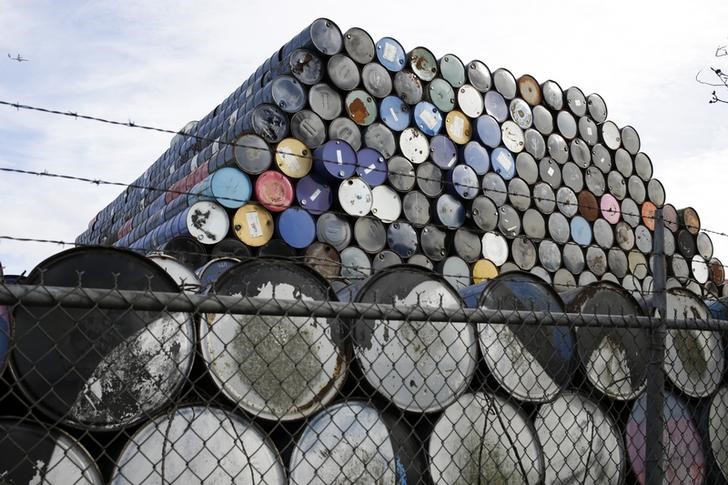Investing.com - West Texas Intermediate oil futures extended gains from the previous session to hit a one-week high on Wednesday, amid speculation weekly supply data due later in the session will show U.S. crude inventories fell last week.
After markets closed Tuesday, the American Petroleum Institute, an industry group, surprised market participants and said that U.S. oil inventories fell by 3.6 million barrels in the week ended December 18, compared to expectations for a gain of 1.0 million barrels.
The U.S. Energy Information Administration will release its own weekly report on oil supplies at 10:30AM ET Wednesday.
Crude oil for delivery in February on the New York Mercantile Exchange inched up 28 cents, or 0.79%, to trade at $36.24 a barrel during European morning hours. It earlier hit $36.56, the most since December 16. On Tuesday, futures rose 33 cents, or 0.92%.
U.S. oil futures are down nearly 35% so far this year amid worries over ample domestic supplies.
Elsewhere, on the ICE Futures Exchange in London, Brent oil for February delivery tacked on 32 cents, or 0.89%, to trade at $36.43 a barrel. A day earlier, prices fell to $35.98, a level not seen since July 2004.
Brent prices are on track to post an annual decline of 36% in 2015, as oversupply concerns dominated market sentiment for most of the year.
Oil futures have fallen sharply this month after the Organization of the Petroleum Exporting Countries failed to agree on output targets to reduce a glut of oversupply on global energy markets.
Global crude production is outpacing demand following a boom in U.S. shale oil and after a decision by OPEC last year not to cut production in order to defend market share.
Meanwhile, Brent's premium over the WTI crude contract stood at 19 cents, compared to a discount of 3 cents by close of trade on Tuesday.
U.S. crude has been firmer relative to Brent recently, on signs that the U.S. oil market is likely to grow tighter following Congress' decision to lift a 40-year old ban on domestic oil exports, while a global glut gets worse in 2016 due to soaring production in Saudi Arabia and Russia.
Oversupply issue will be exacerbated further once Iran returns to the global oil market early next year after western-imposed sanctions are lifted. Analysts say the country could quickly ramp up production by around 500,000 barrels, adding to the glut of oil that has sent prices tumbling.
Market experts predict Brent's premium over U.S. crude to flip into a discount in the coming weeks. The gap between the two benchmarks is down over 95% since its 2015 peak reached earlier in the year.
